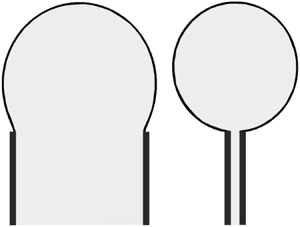Article contents
Evolution of nonlinear perturbations for a fluid flow with a free boundary. Exact results
Published online by Cambridge University Press: 02 December 2022
Abstract

The problem of a plane unsteady potential flow of an ideal incompressible fluid bounded by free boundary segments with a constant pressure and by solid walls moving in accordance with a known law is considered. External forces are absent, and capillary forces are neglected. An approach to constructing exact solutions for this type of problem is proposed. The corresponding solutions can be treated as nonlinear perturbations of a certain base flow. As an example of the application of this approach, nonlinear perturbations in a known problem of a fluid flow with a linear velocity field in the region bounded by a straight-line free boundary and parallel approaching or receding solid walls are considered. It is demonstrated that perturbations grow, which leads to variants of the formation of singularities on the free surface of the fluid within a finite time: formation of droplets, bubbles or cusps. A solution describing the collapse of a bubble in a fluid layer bounded by two approaching solid walls has also been found and studied. Thus, a new method of studying nonlinear stability of complicated unsteady fluid flows with combined boundary conditions is proposed and tested.
JFM classification
Information
- Type
- JFM Papers
- Information
- Copyright
- © The Author(s), 2022. Published by Cambridge University Press
References
REFERENCES
- 3
- Cited by


